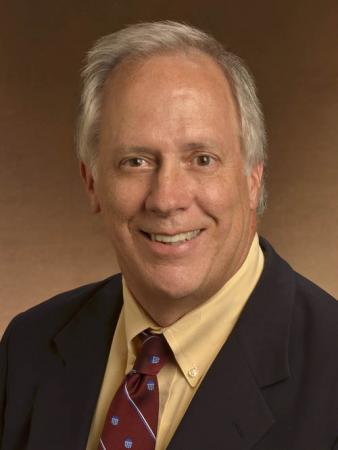
Steven Zinkle
Steven Zinkle
Oak Ridge National Laboratory
Friday, October 7, 2022
3:00pm
Abstract: As noted during the recent US fusion community R&D prioritization planning evaluation and accompanying DOE-Fusion Energy Sciences Advisory Committee and National Academies assessments, and spurred by increased private sector investments, there is growing interest in boldly proceeding with construction of a fusion demonstration reactor. Advanced materials will be foundational for the successful operation of any next-step fusion energy device. This presentation will provide an overview of some of the key advances achieved with respect to fusion materials during the past 10 years, along with an assessment of several key remaining challenges. A brief summary of potential candidate materials (focusing on structural materials) and key degradation mechanisms (primarily associated with exposure to D-T fusion neutrons) will be given. Fabrication processes and baseline properties are generally well established for baseline reduced activation ferritic-martensitic (RAFM) steels, which are considered as the worldwide reference standard for the fusion reactor first wall and blanket structural material. However, these traditional RAFM steels have insufficient creep strength above ~550C to enable the high-performance thermodynamic cycles desired for fusion. In addition, it is predicted that these reference RAFMs will not exhibit suitable radiation tolerance to enable operation beyond ~5 MW-yr/m2 due to cavity swelling and other radiation degradation processes. Several high-performance options for RAFMs have been identified (based on high carbide/nitride precipitate densities and oxide dispersion strengthening, respectively) that are predicted to simultaneously impart improved high temperature strength and improved radiation resistance. Overall, a sound understanding of radiation effects in materials under fission reactor irradiation conditions is available, but extrapolation to fusion-relevant conditions remains elusive (mainly due to uncertainties in the impact of ~100x higher transmutant He generation and synergistic H generation effects). This provides high motivation for construction of a fusion prototypic neutron source to enable evaluation of the radiation-modified operational limits of current reference and advanced options for RAFMs. Materials-related progress and challenges for other key materials systems in fusion reactors will also be discussed, including plasma facing components, breeding blanket and tritium extraction systems, radiation shield and vacuum vessel options, and superconducting magnet systems.
Bio: Steve Zinkle is the Governor’s Chair Professor for Nuclear Materials at the University of Tennessee, Knoxville, with a joint appointment at Oak Ridge National Laboratory (ORNL). He previously served in various management and technical R&D roles at ORNL including Chief Scientist of the Nuclear Science and Engineering Directorate, director of the Materials Science and Technology Division, and ORNL Corporate Fellow. His research interests include deformation and fracture mechanisms in structural materials, advanced manufacturing, and radiation effects in ceramics, fuel systems, and metallic alloys for fission and fusion energy systems. He received his PhD in Nuclear Engineering and an MS in Materials Science from the University of Wisconsin-Madison in 1985. He has written over 300 peer-reviewed publications, and is a fellow of the American Nuclear Society, TMS, ASM International, Materials Research Society, American Physical Society, American Ceramic Society, and AAAS. He has served on a variety of national committees including the National Academies National Materials and Manufacturing Board (2015-2020) and DOE Fusion Energy Sciences Advisory Committee (2009-2015), and is currently on the National Academies Condensed Matter and Materials Research Committee and the DOE National Nuclear Security Administration Defense Programs Advisory Committee. He is a member of the National Academy of Engineering.